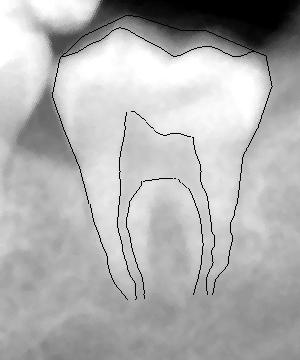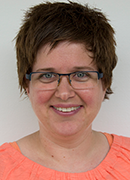Development of improved methods or basis for medical age assessments of minors and young adults
Development of improved methods or basis for medical age assessments of minors and young adults
 Background
Background
Immigration authorities in several countries are confronted with a challenge in the age assessment of young asylum seekers where the applicants are unaware of their exact date of birth, identity documents are missing, or there is uncertainty associated with them. Some applicants may seek to obtain a residence permit or other benefits by claiming to be a minor. The age assessment is both methodologically and ethically complicated, but nevertheless necessary. The problem is particularly complex as it concerns individuals and their legal protection.
There is no European consensus on which methods to use for age assessment, but it is a general understanding that measurements from more than one physical trait should be used in the estimation. A majority of countries assess age based on a medical examination of bone and/or dental development, physical appearance and interviews, while a few states rely on non-medical assessments only. In Norway and several other countries (e.g. Belgium and Germany), a combination of measurements from teeth and wrist have been used. There are however different approaches for combining these results.
It is important to find approaches that can help reduce the uncertainty that will always be related to the age estimate, i.e., variations due to reference data, observers and methods. There is a need for establishing sets of new reference data based on combinations of measurements (at least wrist and teeth) with better quality and understanding of the underlying data. If new data obtained solely for atlas purposes are to be acquired, imaging techniques which do not involve ionizing radiation (e.g. MRI) will be needed. More automated tools for analysis can help reduce the variation due to observers and make measurements more objective and repeatable. Furthermore, the use of digital image analysis may give more effective and consistent interpretation.
Objectives
In 2013 The Norwegian Directorate of Immigration (UDI) put out a call for tender to research organizations and individual researchers, to propose for funding by UDI research that could lead to:
- Improved methods for measuring the physical developments of a child or young adult,
- Improved methods for assessing and determining his/her chronological age on the basis of such measurements,
- An improved basis for such assessments, and in particular whether s/he is older or younger than 18 years of age.
This project has been established as a result of this call.
Project organization
The project involves medical, dental and radiological experts from Norway, Italy and the United Kingdom, in addition to experts in statistical modeling and image analysis at the Norwegian Computing Center.
The work has been organized into the following work packages:
- Better understanding of combined data: The objective is to analyze existing data from age estimations performed in Norway, where independent estimates from both teeth and wrist are combined. The aim is to understand variations and agreement between these estimates. Various factors, groups and methods will be studied.
- Better understanding of dental variations between groups: The aim is to identify and quantify differences in tooth development between genders and ethnic groups, and the impact of this on estimated age from teeth.
- Analysis of MRI-based data: The objective is to investigate further the MRI based methods suggested by Professor Ernesto Tomei (Department of Radiology, Sapienza University of Rome) and colleagues, and to explore the potential of methods based on image analysis to help in the process of analyzing these images.
- Exploration of new methods: The aim is to establish one or more PhD programs on unified holistic approaches to estimate age from teeth and bones and quantify the uncertainty in age estimation.
Project partners
- Norwegian Computing Center (NR) is the project leader. NR has followed the international work in relation to the field of age assessment since 2009. In an initial study from 2011, financed by UDI, NR has evaluated the potential of using automatic image analysis as a helping tool in odontologic age estimation to obtain more objective, repeatable and quantitative measurements. Results on a small dataset indicate that such methods may have the potential to be of help for this [1]. In 2012, financed by UDI, NR and partners wrote an overview over the current state of the art and research challenges in the age estimation in youths and young adults [2].
- University of Oslo, Faculty of Dentistry, Institute of Clinical Dentistry. The Faculty of Dentistry at the University of Oslo has performed age estimations of young asylum seekers from 2003. Associate Professor Sigrid Ingeborg Kvaal has been project manager since 2009.
- BarneSak AS. MD and PhD Jens B. Grøgaard is a pediatrician who has participated in the age estimation of young asylum seekers in Norway from 2009 to 2013.
- Unilabs Norge AS has extensive competence on radiology and is the performing partner on age assessments from bone in Norway today.
- University of Rome, Department of Radiology. Professor Ernesto Tomei from the University of Rome is an expert in radiology working to develop an MRI-based approach for observing skeletal development, to overcome the problem of needing to collect new X-rays images to extend the current reference datasets. His team is looking at using MRI for images of hand/wrist development, with the aim of developing a methodology for age estimation similar to that currently used based on X-ray images and has published a book on MR assessment of skeletal age [4].
- Queen Mary University of London, Institute of Dentistry. Helen M. Liversidge is Reader in Dental Anthropology. Her research areas include quantifying the developing dentition, radiographic assessment of developing teeth, accuracy of age assessment using developing teeth and global population differences in tooth formation, with a range of publications in these areas.
Publications
The project is completed. The final report and four supplementary notes can be found on the following website at The Norwegian Directorate of Immigration (UDI): https://www.udi.no/statistikk-og-analyse/forsknings-og-utviklingsrapporter/development-of-improved-methods-for-medical-age-assessment2016/.
Related publications
- Kvaal, Sigrid I.; Eikvil, Line; Holden, Marit: Bildeanalyse av røntgenbilder til hjelp for aldersvurdering. NR-Note, SAMBA/43/11, 2011.
- Eikvil, Line; Kvaal, Sigrid I.; Teigland, André; Haugen, Marion; Grøgaard, Jens: Age estimation in youths and young adults. A summary of the needs for methodological research and development. NR-Note, SAMBA/52/12, 2012.
- Haugen, Marion; Teigland, André; Kvaal, Sigrid Ingeborg. Assessing agreement between skeletal and dental age estimation methods. NR-note SAMBA/2/13. 2013.
- Text-Atlas of Skeletal Age Determination: MRI of the Hand and Wrist in Children. Edited by Ernesto Tomei, Sofia Battisti, Milvia Martino, Richard C. Semelka, Daniel Nissman. February 2014, Wiley-Blackwell. ISBN: 978-1-118-69227-1.
Contact information
Project period
Financing
Partners
University of Oslo, Faculty of Dentistry, Institute of Clinical Dentistry (Associate Professor Sigrid I. Kvaal)
BarneSak AS (MD and PhD Jens B. Grøgaard)
Unilabs Norge AS (MD and Radiologist Tor Ole Kjellevand)
Queen Mary University of London, Institute of Dentistry (Reader in Dental Anthropology Helen M. Liversidge)
University of Rome, Department of Radiology (Professor Ernesto Tomei and MD Milvia Martino)


 How to get to NR
How to get to NR Share on social media
Share on social media Privacy policy
Privacy policy